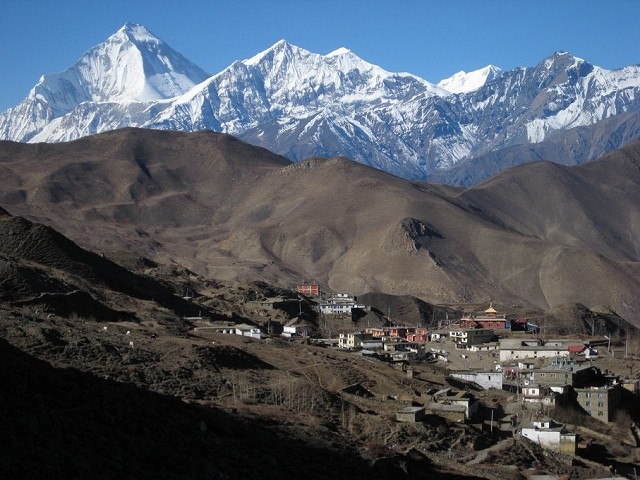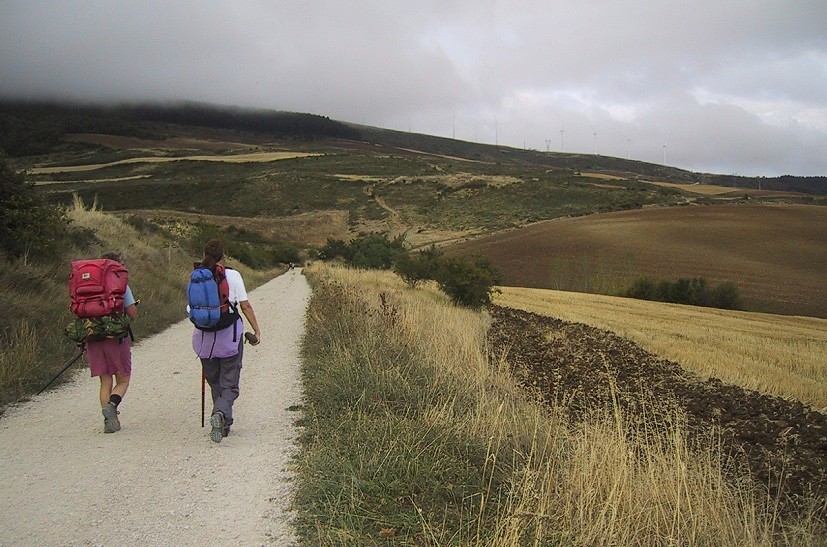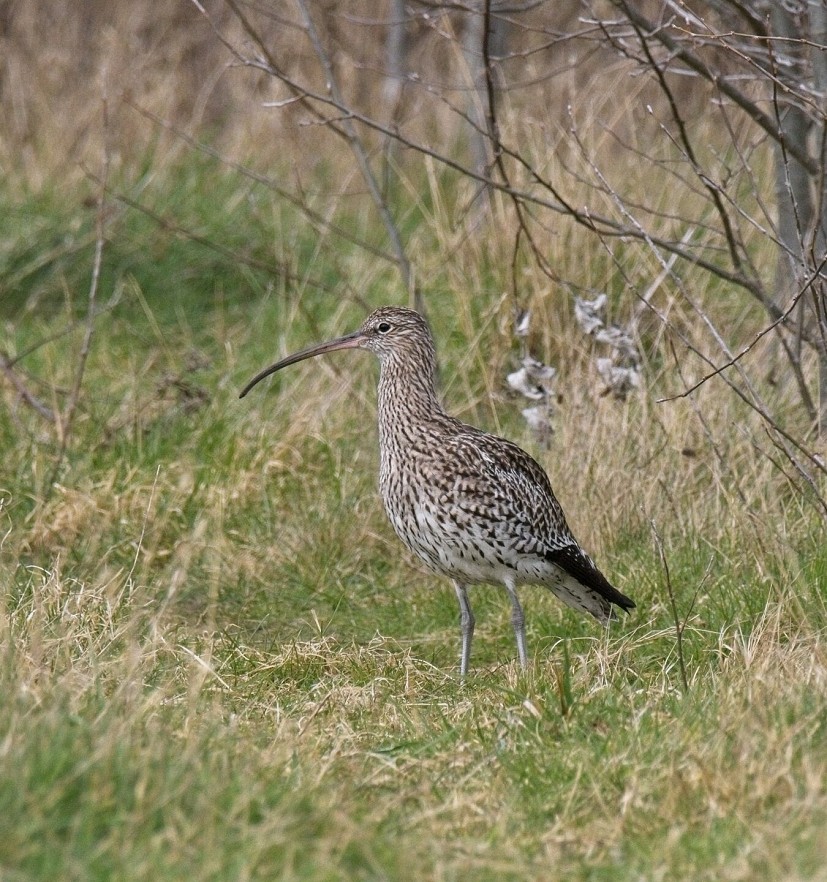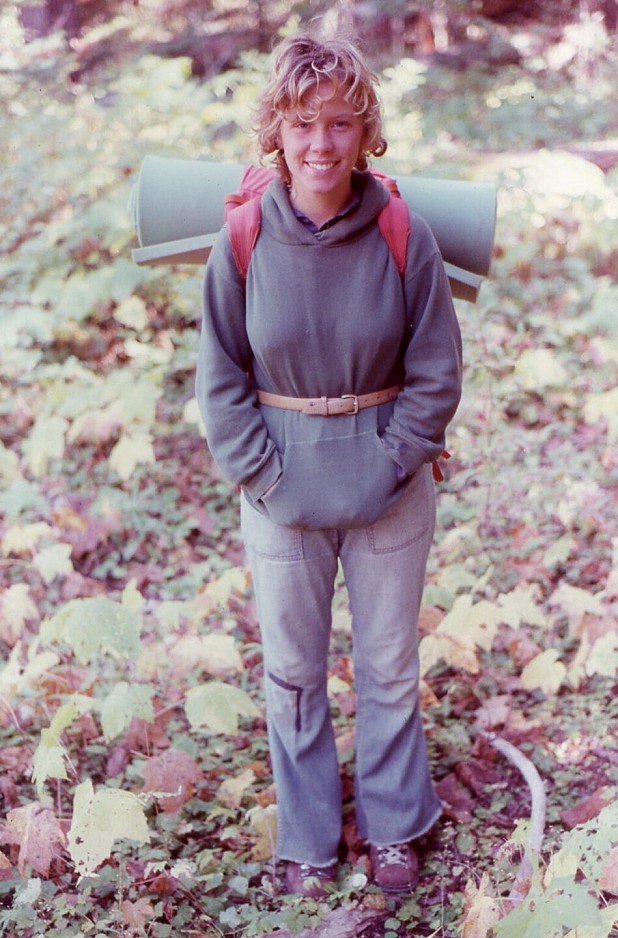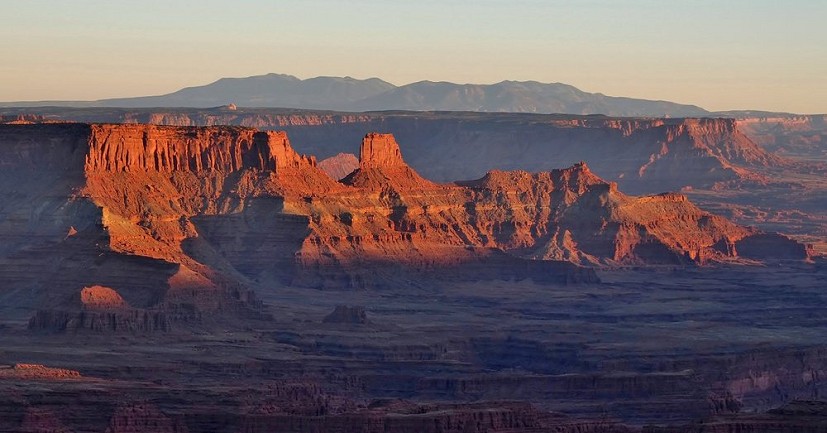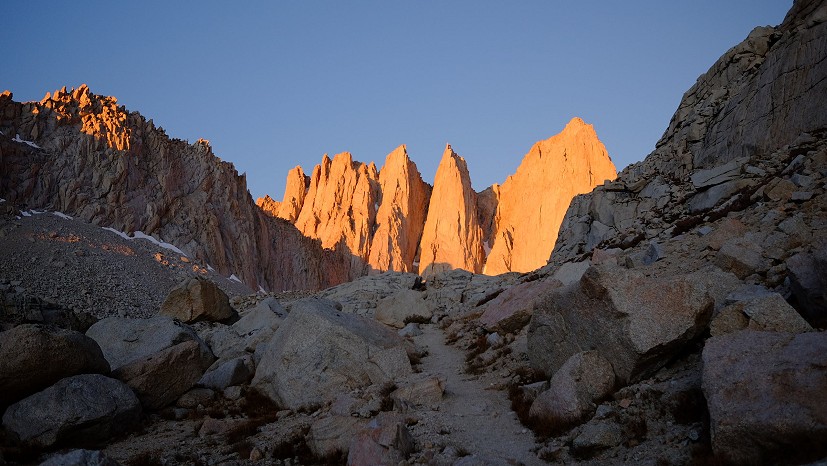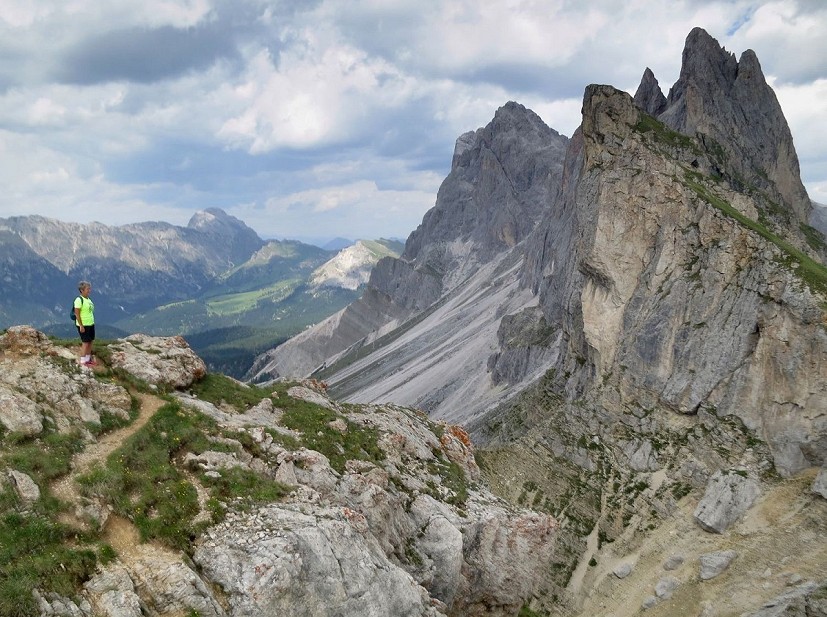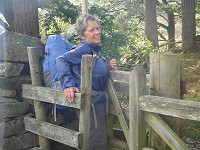15 Lessons From 50 Years of Backpacking
Whether you're backpacking in the wild, or enjoying the comforts of Alpine huts or Himalayan guesthouses, successful long distance walking has as much to do with attitude as the stuff you carry. Veteran hiker Louisa Rogers shares insights gained over a five-decade 'career' on the trails of the world.
About 5:00 a.m., I woke up, my back stiff from an uncomfortable night on a thin straw mat. Barry and I were spending the night in a teahouse above the Himalayan village of Muktinath. "I have an excruciating headache," he told me. In an hour, we planned to start climbing Thorong La, a difficult, snow-covered pass at almost 5,500m (18,000') on the Muktinath Pilgrimage route, then hike down the other side. With Barry's head pounding, however, we decided to wait an hour to see if felt better. But soon after, it began to snow, and having heard horror stories of people getting lost on the pass in snowstorms, we knew it was game over. With fresh snow, the boot prints from earlier hikers would be covered, leaving no visible trail. After a breakfast of dhal, we started the long trudge down the mountain in intensifying snow, which later turned into a record blizzard.
At first we were disappointed, but later realized the snow saved us from potential disaster. As young hikers in our thirties, we didn't recognize the importance of respecting elevation. We should have stayed 300m (1,000') lower in Muktinath one or two more nights before attempting the pass. Barry's headache meant he had no business climbing another 1,200m.
Since we met in the 1970s, Barry and I have backpacked, trekked, and hiked not only in Nepal, but in 12 U.S. states, Canada, Britain, France, Greece, Spain (the Camino de Santiago), Turkey (the Lycian Way), Morocco, the Sinai, Borneo, Mexico, Guatemala, Nicaragua, Panama, Cuba, Peru (the Inca Trail to Machu Picchu), and Ecuador. Here are 15 lessons we've learned in our time together, starting with the one I just described:
1. Respect elevation! While usually just causing a bad headache, in severe cases, high altitude and poor acclimatisation can be life-threatening.
2. Pack light. In the past, I carried way too much stuff. Halfway along the Camino de Santiago, which we hiked to celebrate my 50th birthday, we mailed a box of our extra belongings to the town of Santiago de Compostela, our destination. Three weeks later, at the post office to pick up our stuff, we discovered we were not alone: a whole area of the room was dedicated to shipments from peregrinos (pilgrims).
Barry and I are often shocked by how much weight younger backpackers are carrying. At 70, I bring fewer things in order to put less stress on my ankle, which I damaged in a skydiving accident. Thanks to lightweight tents, backpacks, boots and downloaded digital maps, it's easier today (though I did love the elegant, detailed British Ordnance Survey maps back in the pre-internet era!).
3. The right equipment makes a huge difference. I learned this the hard way while walking the Coast-to-Coast in 2011, this time to celebrate my 60th birthday (we do a long-distance walk every ten years, during my birthday month). Although Barry was raised in England and we'd previously hiked many of the UK's spectacular National Parks, the Coast-to-Coast reminded us how muddy and wet British trails could be.
Our fellow hikers were well-kitted with waterproof boots and gaiters. Not us. Virtually every night we'd park our soaked boots in an airing cupboard. By morning they'd be mostly dry, only to turn wet again by night, because even if it didn't rain that day, the ground was still muddy.
4. But don't obsess over the latest shiny toys. Wordsworth got along fine walking the fells without a brand new Gore-Tex jacket. Similarly, I don't obsess over every name-brand pack, pair of boots, or tent. Decent equipment helps, but just as a camera does not make the photographer, equipment doesn't make the hiker.
5. Speaking of cameras…limit your pictures. During Covid, Barry and I scanned six albums, throwing out hundreds of photos of mountain ranges and alpine lakes, because, beautiful though they were, we could barely distinguish one from another. Besides, taking constant photos prevents you from experiencing beauty firsthand.
6. Poles. Use one or two poles even if you feel confident about your footing. There's no shame in using them, and even if you have great balance, your future knees will thank you.
7. You don't have to hike the whole day, every day; and you don't always have to go far. While Barry and I tend to be goal-setters, a friend reminds me that she and her backpacking buddy sometimes only hike an hour or two before setting up camp. Even in short distances, they find beautiful isolated places, often seeing no one. Another friend loves spending an afternoon reading and viewing plants, animals, and landscapes through her binocs while her partner fishes.
8. Don't throw away water! While backpacking in Utah's Canyonlands National Park in the 90s, at one point Barry threw away a bottle of muddy water. I was furious, but providentially, a ranger showed up with water. Barry later realized he was dehydrated, which made his thinking a bit fuzzy.
9. Carry ribbon. If you and your hiking partner walk at different rhythms, use a ribbon to show the way at a fork (works best in wooded areas - less use on bare hillsides).
10. Appreciate the unexpected gifts that arrive. On an eight-day trek, Barry and I arrived at the camping spot where we'd spend the night before climbing Mt. Whitney, at 14,505' (4,421 meters), the highest peak in the continental U.S. We were hot, sweaty and tired. "I'd die for a cold beer," Barry said, as I wandered off to check out the area. To my surprise I found a trail crew–with a generator-powered portable fridge, no less. "Do you by any chance have a beer?" I asked. They did. Barry couldn't believe it. Best beer ever!
11. Recognize that long-distance walking in many parts of the world is not the same as wilderness backpacking. It's usually easier, because you don't have to schlep stuff. On overseas walks, we usually sleep in beds, not on the hard ground. We've been spoiled silly staying in guesthouses (Nepal), refugios (the Camino, as well as the Dolomites), and B&B's or hostels (Coast-to-Coast). We rarely need to carry food or cooking gear, because our hosts serve us home-cooked meals or we eat in budget restaurants.
The wilderness isn't the same as in the U.S., either. Much as I appreciate the U.S. National Parks, in a way they're artificial, with no one living there unless their homes have been "grandfathered in." This is completely different from mountain ranges like the Himalayas and the Andes, where you find hamlets and villages dotted throughout the landscape. The Himalaya, in particular, is a busy place, filled with yaks, shepherds, climbers, trekkers and porters carrying firewood and supplies to cater to hungry tourists. When Barry and I backpack in the U.S., we don't get to kick back in a cafe or bar like we did in my favorite mountain range anywhere, the Dolomites.
12. Bond with fellow hikers. In Cusco, we met a Swiss couple that also wanted to hike the Inca Trail. Although we were there in the dry season, it rained three of the four days on the trail. In pouring rain, the four of us clambered up and down the steep, slippery stone staircases built centuries before by the Incas.
Barry and I made a lasting friendship while walking the Coast-to-Coast on a rainy day in a bunkhouse in the village of Keld, Yorkshire. Hasnah and her dog had driven up from the south for the weekend. The next day, we tramped through marshy fields to a nearby pub. Since then, we've seen each other in Britain, Catalonia, and twice in Mexico, where Barry and I live part of the year.
13. Observe basic environmental etiquette. Do your part to minimize your contribution to environmental decay and climate change, including embracing "Leave No Trace" habits. I'm appalled to find plastic, toilet paper, and other trash on and off the trails everywhere. You'd think backpackers would be responsible stewards of the planet, but sadly, many of us are not.
14. Use a canister stove with no priming required. In 2011, Barry and I were backpacking in the Lost Coast Wilderness, one of the last stretches of undeveloped land in the U.S. West Coast, when we caused a 500-acre fire. The cause was the MSR WhisperLite stove we were using, which required priming. After trying to light the stove with a lighter unsuccessfully, Barry rummaged through his pack for matches. In the 15 seconds it took him to find matches and relight the stove, a gust of wind hit, and the ball of flame took on a life of its own, jumping maybe 10 feet and landing on a steep bank of dry grass. In seconds, the entire hillside was a wall of fire.
The fire Barry and I caused was the most dramatic and dangerous event in our outdoor lives. We were lucky - no people, animals or structures burned. But ever since, we've used a canister stove that requires no priming!
15. Honor those who came before you. Where I live during backpacking season, on the West Coast of the U.S., many of the trails Barry and I enjoy were created by Native Americans, whose numbers are vastly diminished because of the genocide perpetrated by White settlers. As a person who benefits today from the sacrifices of those who came before me, I feel it's my responsibility to honor them, in whatever way I can. Sometimes I do this by contributing financially to organizations, sometimes by voting for certain politicians. The year before COVID, I was dismayed to notice that the brochure describing a wilderness area near where we live failed to mention the massacres destroying the Wiyot tribe, which occurred there in the 1860s, so I wrote the California Parks Association to request they add that historic information. It was time-consuming, because I didn't realize that another organization also managed that area, so then I had to start writing them, too. But I figured taking time to write emails was the least I could do. (Now it's time to follow up!)
Every part of the world is different, but no area is free of history, one usually fraught with bloodshed, ethnic violence, and injustice. Wherever we live, part of showing gratitude for the privilege of walking in beautiful areas is to honor those who helped to create these lands, especially if they were harmed in the process.
There's nothing more restorative to me than exploring areas of natural beauty. Hiking is my spiritual medicine, calming me when my emotions are swirling, helping me focus when distracted, waking me up when lethargic. I feel most alive in the wilderness, humming to myself and finding myself laughing for no reason at all as I wander along a trail. At 70, I plan to follow in the timeless footsteps of those who came before me for as long as my feet will let me.
About Louisa Rogers
Louisa Rogers is a freelance writer, based in Eureka, CA and Guanajuato, Mexico. Her articles and essays focus on physical and psychological health, travel, expat life and food. They have appeared in Yoga Journal, Entrepreneur, Weight Watchers Magazine, Glamour, Transitions Abroad, International Living, Travel Awaits, Heart Healthy Living, Nature & Health, The Vancouver Sun, The Boston Herald, The L.A. Times, The San Francisco Chronicle, as well as publications in the UK, Australia, South Africa and Brazil. She and her husband love to hike and backpack all over the world.
